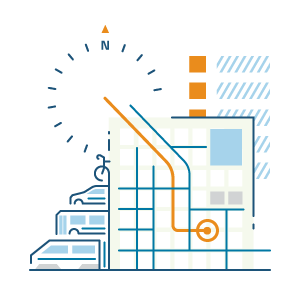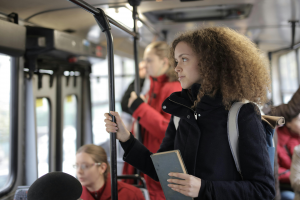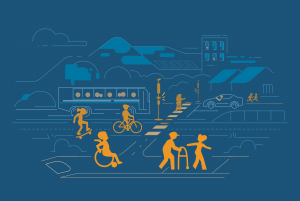
Signaling the Way for a Greener Future
California’s Rail Plan and the Path to Integrated Transit
California is reaching an exciting milestone with the release of its updated State Rail Plan, a forward-thinking blueprint designed to improve the State rail network for cleaner, faster, and more accessible travel. Implementing this plan will not only strengthen the backbone of California’s rail system but also reduce greenhouse gas (GHG) emissions, support economic growth, and offer better transit connections for commuters. However, to maximize the impact of these rail improvements, it’s vital to expand the focus to all aspects of public transit.
Graphics above from the California State Rail Plan
Public transit needs to become the first choice for more Californians. Bus transit plays a crucial role in this as buses typically are ideal for journeys of less than 10 miles, and can include even shorter last-mile trips enhanced by expanding microtransit services in both dense and less dense urban areas. As new and expanded rail services come online, connecting passengers to their homes and other key destinations will be made easier if riders are already using frequent, well connected bus services. By improving the bus network in advance and alongside the new rail infrastructure, we can create a cohesive, reliable transit system that meets the needs of more people and therefore thrives organically.
To encourage more Californians to rely on public transit, it’s essential to improve the experience of bus travel, led by frequent, well connected services. This also means improving bus stops that are comfortable, safe, and equipped with amenities like seating, shelter, lighting, and clear route information. Accessible, well-designed stops make bus transit more inviting and ensure that all riders—particularly those with mobility challenges—can use the system comfortably. Electrifying the bus fleet is another critical piece of this puzzle. As California moves toward cleaner energy, transitioning to electric buses will play a significant role in reducing emissions and noise pollution. Electric buses not only contribute to a cleaner environment but also provide a quieter, more pleasant ride, making public transit an appealing choice for more people.
Graphics above from the California State Rail Plan
An important key to successful transit growth is ensuring that each improvement supports the next. Making bus travel a more attractive, convenient option, will help public transit grow organically. This growth will happen when people experience that buses, like trains, can offer a smooth, well connected, comfortable ride that is part of a larger transit ecosystem. When bus ridership increases, it benefits the entire system, strengthening demand for more routes, more frequent services, and additional investment in transit infrastructure.
California’s updated State Rail Plan is a great step forward, but getting the most out of it will require a strong bus network to complement the needed rail improvements. By making bus travel an attractive, comfortable and sustainable option, we will create a public transit system that will reduce car dependency in California, meet our critical climate goals, and improve mobility for all residents.

Want to work with us? Feeling inspired?
Contact us at info@dcrdesign.net or checkout our social medias: LinkedIn, X and Instagram
For more information visit:
California State Rail Plan, Zero-Emmissions Bus Regulations – California Transit Association, TIRCP









